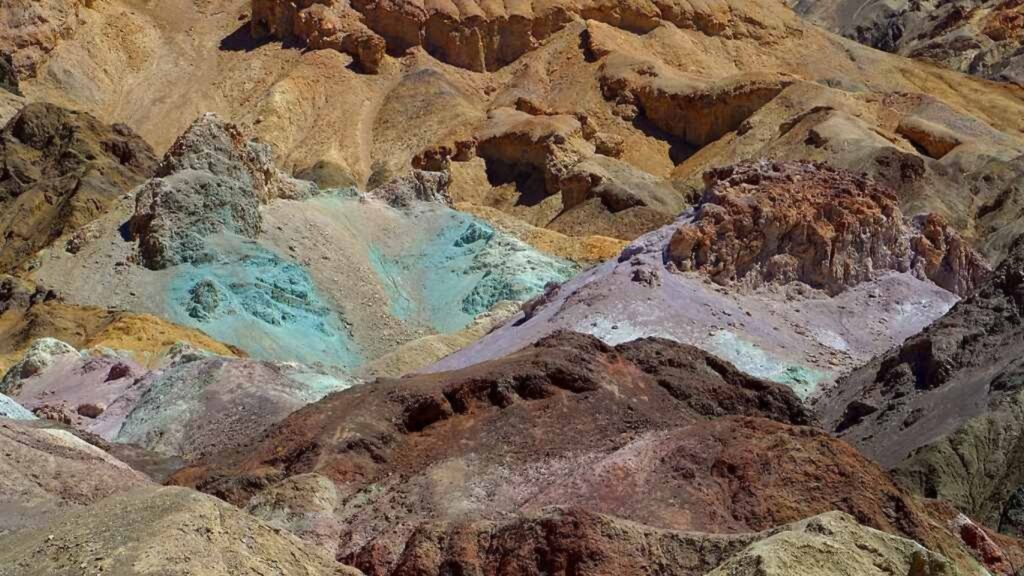Like many other markets, the mineral rights market is a time-sensitive one. As a result, actions taken must be swift and decisive. People who wish to sell their rights must be aware of the various legal documents for mineral rights that must be dealt with. These documents must be handled properly to ensure an easy sale process.
It is essential to be acquainted with as many details as possible about the process of selling or buying mineral rights for a fair price before making any decisions, especially if it is your first transaction.
You can get your desired profit – or money’s worth – if the sale or purchase is possible. It doesn’t need much effort if you are familiar with the whole process. Seeking professional advice is recommended to ensure all documents are dealt with correctly.
This comprehensive guide will provide detailed information on the relevant legal documents that are extremely helpful for mineral holdings. You may need one or more of these documents depending on your situation. Here is a brief overview of each type of document.
Keep on reading!
What are mineral rights, and why do you need proper documentation?

A mineral right is defined as the right to explore and exploit the minerals below the land’s surface. Mineral resources could include oil, natural gas, silver, and many more. In other words, parties owning mineral rights can exploit a specific area for the mineral resources underground.
Mineral rights are regarded as a real property interest, which can be separated from surface rights. For this reason, discovering minerals on a piece of land you buy does not necessarily imply that you can sell or use the minerals.
Furthermore, it should be noted that purchasing and selling mineral rights independently of property rights is possible. For the former, it is essential to have proper legal documentation. It is straightforward.
After all, if you wish to sell your mineral interests, engage in a lease, or transfer ownership, the necessary documents must be available for the selling process. You can also acquaint yourself with this by seeking professional help from a competent attorney.
What documents do you need for mineral rights and oil and gas royalties?
This section will explain, in detail, the original documents necessary for mineral rights and mineral royalties.
Conveyance Documents
There are many forms of conveyance documents, including a personal representative deed, mineral deed, and warranty deed, among others.
A mineral deed is necessary for a mineral rights owner who has the minerals in their name with a clear title. The deed’s original recorded copy should be kept.
You might need to sign a Cross-Conveyance, Stipulation of Interest document, or any other conveyance document to verify ownership, especially whenever ambiguities with previous conveyances arise. These documents and deeds can be important.
Division Orders
This record reveals the interest in a specific well or multiple wells. Division orders contain the decimal interest, well number, interest type, and well name. These documents are only received when the oil or gas production has been established from a producing well of interest.
A division order ensures that double liability for the party paying the royalty – to landowners or other royalty owners – is completely eliminated. Ensure that you acquaint yourself with how these documents work.
Surface Use Agreement
These agreements are needed to guide the relationship between a party holding surface rights and the mineral owner concerning the drilling activity carried out by operators. In many states, operators must sign these agreements before production can begin.
On the other hand, mineral owners are not necessarily required to enter into such agreements. However, many are willing to maintain a good relationship with the surface rights owner by signing surface use agreements.
Surface use agreements ensure that landowners are protected from issues relating to liabilities. In the case of damage, landowners can receive maximum compensation when the operator causes significant damage to land or structures.
Mineral Lease (Oil and Gas Lease)
This is an agreement – based on a contract – between the mineral estate owner (the lessor) and another operator, e.g., an oil and gas company (the lessee), for a particular term. A mineral (oil & gas) lease ensures that the operator is granted the right to explore and exploit the mineral or oil and gas deposits, as explained in the lease terms.
When the lessor enters such a lease, they form a partnership with the lessee. If you are a lessor, entering into a mineral lease with a lessee makes it impossible to lease the same access to another interested party until the terms of the lease expire.
Once the lease expires, all mineral rights are owned by the original mineral owner again.
Order for Payment
An order for payment is a document that grants the lessee a specific period, which can vary, to conclude its review for when payment will be made. For owners, an order for payment can be a positive thing. After all, this document establishes the time when an oil and gas lease bonus will be paid.
Besides this, an order of payment sets a deadline for the payment receipt to be granted. Similar to any other document for inherited mineral rights ownership, this essential document must be scrutinized.
Tax Documents
These include the following:
- Receipts related to expenses on royalties and minerals: accounting fees, legal fees, property tax (ad-valorem tax) paid, and landman fees.
- Records related to the sale of minerals, such as check stubs.
- Form 1099 for lease bonus payments, royalties received, and more.
In order to understand how taxes work, an example is necessary. Lease bonus payments are treated just like ordinary income. Amounts exceeding $600 come with a 1099 form to record the lease bonus. You should add this income to your tax return. Often, lease bonus payments are regarded as rental income.
Check Stubs & Revenue Statements
These are essential documents that cannot be ignored. Recent check stubs and revenue statements are needed for several reasons. However, for guidance, you should check with your CPA to ensure that the retention period does not violate any IRS guidelines.
Check stubs are kept for end-of-year tax purposes. A 1099 form can help you summarize or explain royalties for the previous year. Even without a 1099 form, your accountant will still need the relevant information to establish tax liability and eligibility for tax credits.
Besides this, you should retain your check stubs and royalty statements – for payments made to any royalty owner – for audit purposes associated with royalties. When these are monitored, it becomes easier to determine how correct the Net Royalty Interest is. You can also be sure that allowed deductions are the only ones considered.
Property Documents
These show ownership of a specific tract of land. In the case of inherited property, it is imperative to study the land title record to prevent any risk of losing ownership of mineral rights or any mineral interest.
Existing Offers
Any legal documents for existing offers for your mineral rights sale or lease must be well-written.
Conclusion
In most cases, acquiring a property does not mean you own the right to enjoy the value of the minerals found beneath it. However, if you do, it allows you to make a significant profit. Mineral owners often sell their rights or partner with oil and gas leasing companies.
Any transaction related to mineral ownership requires the correct documentation. Expert help with any documents involved in the process is highly recommended for many reasons, as mentioned above. By understanding each type of document, you will be better prepared to handle any situation that may arise.
Such records benefit any person looking to answer questions such as what is owned, how much is owned, where it can be found, and everything that can reveal its value to get a good deal. To complete the transaction process, you should acquire the services of an attorney, engineer, or landman for professional assistance.
FAQs
How do mineral rights work in Arkansas?
The state of Arkansas owns all minerals, including oil and gas, within its borders. Private individuals may lease these rights from the state to explore and develop them. The lessee must follow all state and federal regulations regarding exploration and development and pay a percentage of any production revenue to the state.
How do I transfer mineral rights in North Dakota?
Mineral rights in North Dakota are transferable through a deed, just like any other type of real property. A valid deed must be properly executed and recorded with the county recorder’s office. The new owner will have the same rights and responsibilities as the previous owner.
What is the difference between a royalty deed and a mineral deed?
A royalty deed is a type of deed that specifically conveys the right to receive royalties from a property without conveying any ownership interest in the property itself. A mineral deed conveys the ownership interest in the minerals and the right to receive royalties from them.
How do I find my mineral rights in Oklahoma?
To find your mineral rights in Oklahoma, you need to contact the county recorder’s office where the property is located and request a copy of the deed. The deed should indicate whether or not the mineral rights have been conveyed to another party. If they have, contact that party for further information.
How are mineral rights conveyed in Colorado?
Mineral rights in Colorado are typically conveyed through a mineral deed. A mineral deed is a legal document that transfers ownership of the minerals from one party to another. The deed specifies the type and amount of minerals transferred, as well as any other terms and conditions of the transfer.
How do mineral rights work in Illinois?
Mineral rights in Illinois are similar to other states in that the owner of the surface land also owns the rights to any minerals beneath it. However, potential mineral rights owners should be aware of some differences.
First, it is crucial to note that while the owner of the surface land has the right to extract and use any minerals underneath it, they do not have the right to prevent others from doing the same. In other words, if someone else owns the mineral rights to a piece of land, they can extract and use the minerals without the surface owner’s permission.







Leave a Reply